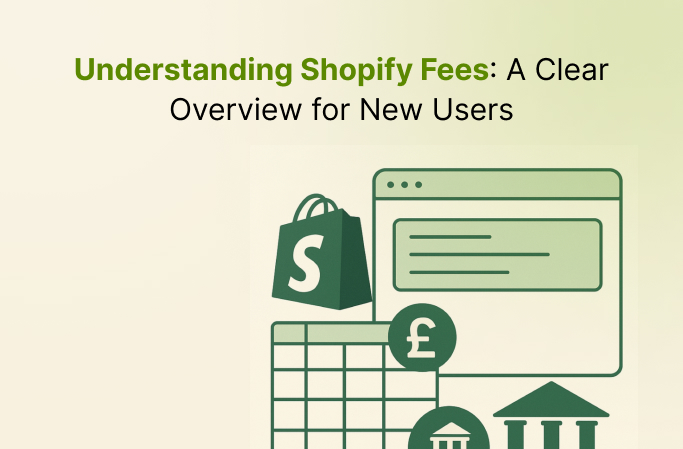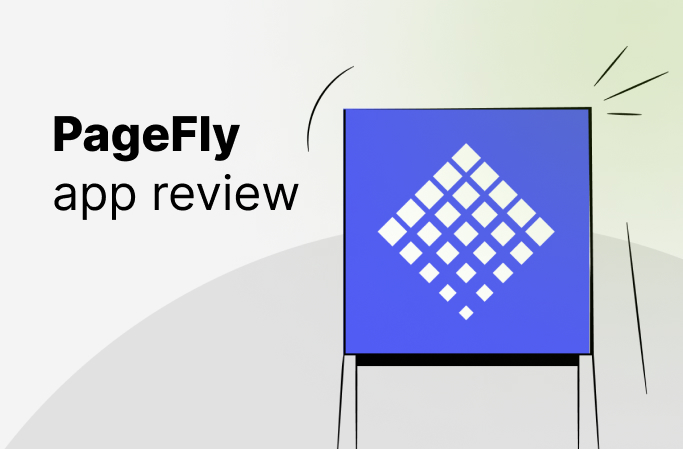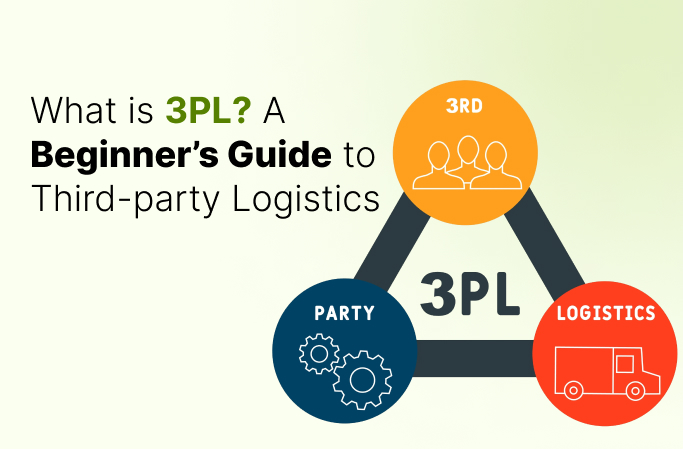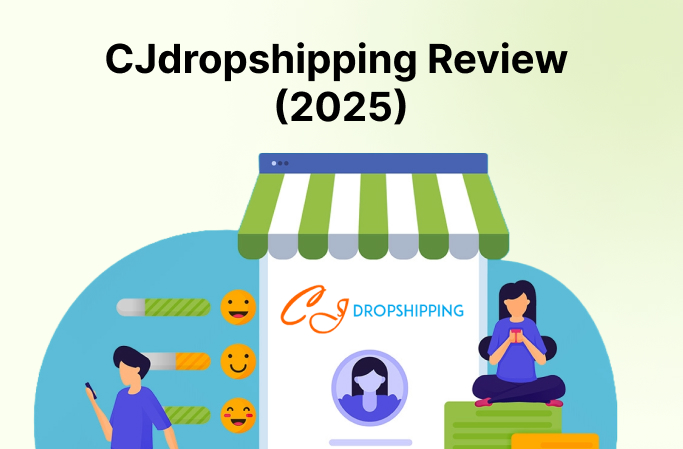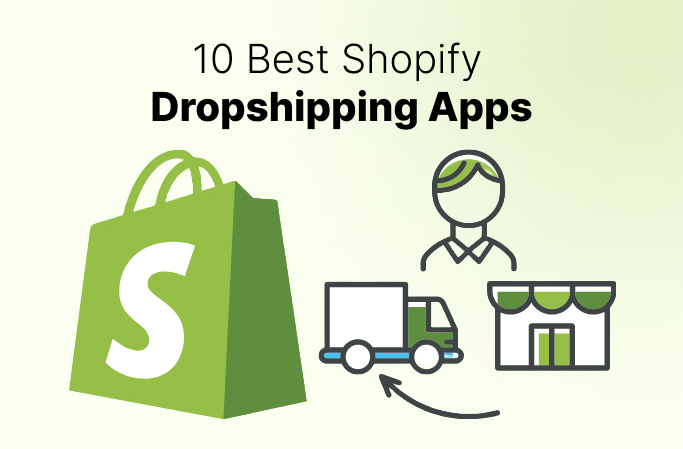PageFly Review (2025): Is This Shopify Page Builder Worth Paying For?

There’s a universal truth that people are naturally attracted to beauty, whether it’s about a person, a thing, or a website. The things matter the most when you own a Shopify store – the more visually appealing it is; the more people will spend time on it. Although Shopify’s simplicity and a long list of free themes make it easy to set up an e-commerce store, it still falls short in terms of personalization, making your store look more generic. In such a case, you are left with two choices: either keep it going or switch to Shopify page builder apps like PageFly. This app lets you build personalized pages for your online store. But is it worth trying out? Let’s find out in this detailed Pagefly review.
PageFly is a simple and easy-to-use page builder for Shopify that helps you to create pages for your online store, including homepages, product and collection pages, blogs, and landing pages. It has over 100 free templates to enhance the store’s visual appeal. But is it worth all the hype? How much does it cost? Does it really work? You probably have a long list of doubts. Let us clear them all through our first-hand experience of using it, answering the most common questions you might have.
In this review of PageFly, we will assess the features, pricing, and efficiency of this Shopify page builder. In between we will give our expert opinion and insights to make sure you remain guided. We will end this review with a detailed list of the pros and cons of using this web page builder tool. So, let’s get started!
What is Pagefly?
Pagefly is a simple and user-friendly page builder with a drag-and-drop editor to create multiple pages for your e-commerce store. These include homepages, product and collection pages, blogs, and landing pages.
The PageFly landing page builder can help you create a Shopify store from scratch or use 100+ of its templates for quick setup without much coding skills.
The platform offers all the necessary tools for page element customization. Since its launch in 2017, the platform has risen to enormous popularity and widespread adoption among e-commerce businesses.
Features of PageFly That Are Worth Mentioning
PageFly has a lot more to offer than most of the page builders out there. Its features and advanced yet simple functionalities make it easy for merchants to boost their store’s appearance and ranking.
Here are some noteworthy features of PageFly:
Page Templates
PageFly has over 100+ conversion-optimized templates that can help businesses create specialized pages, such as season sales, product pages, and landing pages. These templates are exceptionally great at customization, with options to tailor button sizes, colors, animations, and accordion sections. This helps you get a professional store look that is crucial for conversions.

Drag and Drop Page Builder
The simplicity of PageFly lies in its intuitive drag-and-drop editor that lets you edit your webpage in real-time. You can easily add, modify, or even remove sections and elements without much coding experience. There is also an option to create and replicate section templates for a consistent design.
If you are from a technical background, you can use your coding skills to tweak CSS for better design control.
Analytics
PageFly offers an advanced analytics suite to track page performance and metrics, such as views, conversion rates, and revenue. An interactive dashboard offers detailed insights into different page types. The platform seamlessly organizes data better than the default analytics page.
Integrations
The platform seamlessly integrates with other Shopify apps to enhance the store functionalities through upselling, cross-selling, reviews, and email marketing to simplify operations and growth. You can integrate with other top Shopify apps to boost the performance and efficiency of your online store.

24/7 Support
PageFly offers 24×7 customer support services to its users, and it actually sticks to its claim. No matter whether you are on a free plan, the customer support executives are fast enough to reply in seconds. You don’t have to wait for hours or days to get your problem solved.
How Much Does PageFly Cost?
PageFly offers clean pricing plans that fit everyone’s budget. This unique approach is rarely seen in other apps. Let’s take a closer look at their pricing options.

Free Plan
The free plan is perfect for users who want to test the app or are just starting on Shopify. This plan gives you access to all app features, 24/7 live chat support, and limited tracking sections. However, it only includes one slot (one published page or section). If you need more slots, you will need to upgrade to a paid plan.
The free plan is great for getting a feel of the app, but you may need to upgrade if you want more functionality. Note that if you want unlimited blog post pages, you will have to pay an additional $49 per month. The free plan does not include video call support.
Pay-As-You-Go Plan
The Pay-As-You-Go plan costs $24 per month and includes five slots. You get the same features as in the free plan but with more slots. You can buy up to 50 slots with this plan. The cost for 50 slots is $69 per month. This means the more slots you add, the less you pay per slot.
For example, you pay $4.8 per slot with five slots, but with 50 slots, you only pay $1.38 per slot. This plan is ideal for users who need more slots but want to pay only for what they use.
Unlimited Plan
The Unlimited plan costs $99 per month and offers unlimited slots. This plan also includes priority customer support, including video call support, unlimited tracking sections, and unlimited blog post pages. This plan is perfect for enterprise Shopify users who need the most out of the app. With this plan, you get the ultimate package with exclusive services, ensuring you have all the tools you need to succeed.
PageFly vs In-built Shopify Themes: Which is Better for Page Building?
There are many great Shopify themes available, each with different features and pre-designed templates. However, when it comes to functionality, features, and flexibility, Shopify themes fall short in comparison to the level of personalization PageFly offers.
Here are some points that will help you differentiate between Shopify themes vs PageFly:
Customization
The best thing about PageFly is that it has almost unlimited customization options. It allows you to customize every element of your page, right down to the smallest details. For example, you can adjust button sizes, colors, and styles. This level of detail can make a big difference in conversions. In contrast, Shopify themes tend to rely more on pre-designed page templates, offering fewer customization options.
Clean and Optimized Code
Pages built with PageFly often have cleaner and more optimized code. This can lead to slightly better loading speeds compared to those built with Shopify’s default page builder. Faster loading pages can improve user experience and potentially boost your site’s performance.
Flexibility
While Shopify themes are a good choice for those who don’t want to spend time customizing their websites, PageFly offers a higher level of flexibility. It allows users to create more unique and tailored web pages. This flexibility is great for businesses that want to stand out from the competition.
Combining PageFly with Shopify Themes
You don’t have to choose between PageFly and Shopify themes. You can use PageFly alongside Shopify themes to maximize your website-building efforts. This combination allows you to take advantage of the strengths of both tools, providing a powerful solution for building and customizing your online store.
PageFly Reviews: How Users Have Rated It?
PageFly is quite popular among its users, earning many positive reviews. It’s recognized as one of the top Shopify apps, which is not surprising given its robust features and design capabilities. Many users appreciate the wide range of templates that PageFly offers. The user-friendly interface further adds to its appeal, making it simple for even beginners to create professional-looking pages.
However, not everything is perfect. Some users have pointed out that the pricing can be a bit high. This is especially true for small businesses or individuals who may find the most challenging. Another common criticism is the lack of A/B testing options.

Pros and Cons of PageFly
After using PageFly’s landing page builder, we found many positives and only a few minor drawbacks. However, these drawbacks didn’t affect our overall positive impression of the app.
Pros
- Intuitive Page Editor: PageFly’s page editor is very user-friendly and powerful. It gives users great control over their online store’s design. You can easily add and edit elements, rows, and columns in each section. This makes it easy to customize your site exactly how you want it. It also supports responsive design, meaning you can design for specific screens or all devices at once. The automatic mobile optimization feature is a big plus.
- Shopify App Integrations: PageFly integrates well with many popular Shopify apps. This allows users to enhance their store with additional features that can boost conversions and engagement. The ability to use these integrations directly from the page builder makes it even more convenient.
- Compatibility with Shopify Themes: One of the best features of PageFly is that it can be used on top of an existing Shopify theme. This means you don’t have to rebuild your store from scratch. You can adjust and arrange elements flexibly without losing your original design.
- No Coding Needed: PageFly allows users to achieve their desired design without any coding knowledge. It offers detailed customization options that let you tweak every element to your liking. This makes it accessible to everyone, even those without technical skills.
Cons
- Complex Navigation: While PageFly has an intuitive design, new users might find it a bit challenging to navigate at first. This is because PageFly is more complex than Shopify’s native page builder. However, this complexity is justified because PageFly offers extensive customization options. Many users find these options worth the initial learning curve.
- Slightly Expensive: When it comes to pricing, PageFly’s broad functionality is reflected in its structure. There is a free version available that allows you to publish a single page. However, to fully utilize the platform for a functioning store, you need to opt for one of the paid plans. This can be a consideration for those with budget constraints.
- Lacks A/B testing Features: Another point to note is that PageFly lacks A/B testing options. This can be a drawback for enterprise Shopify users who rely on A/B testing to optimize their pages. Despite these challenges, the extensive customization options and powerful features make PageFly a valuable tool for many Shopify users.
Top 3 PageFly Alternatives to Try in 2025
After reading this PageFly review, if you still think this page builder isn’t the one you are looking for, we have curated a list of the top 3 alternative Shopify page builders.
1. GemPages
Website: https://gempages.net/

GemPages is a perfect PageFly alternative, offering excellent A/B testing tools, which PageFly lacks. A/B testing allows users to compare different versions of a page to determine which performs better, making GemPages the ideal choice for those who prioritize this feature.
While PageFly is known for its user-friendly interface and affordability, especially for smaller stores, GemPages provides a range of pricing plans, from free to $199 per month, catering to various needs. Our tests found that PageFly’s interface is simpler and more intuitive, making it easier for beginners.
However, GemPages stands out with its robust A/B testing capabilities, making it a strong contender in the market. Depending on what features are most important to you, either PageFly or GemPages can be a suitable choice for building and optimizing your Shopify store.
2. Shogun
Website: https://getshogun.com/page-builder

Shogun is a drag-and-drop website builder designed for Shopify stores. It is quite similar to PageFly but tends to be a bit more expensive. Shogun offers a free plan, with its paid plans ranging from $39 to $499 per month.
However, Shogun falls short in terms of customer support when compared to PageFly. Live chat support is only available starting from the ‘Measure’ plan, which costs $149 per month. This makes it less accessible for users on lower-priced plans, whereas PageFly provides more comprehensive support across its pricing tiers.
Despite these differences, both Shogun and PageFly offer powerful tools for building and customizing Shopify stores, catering to various needs and budgets.
3. ClickFunnels (Not for Shopify)
Website: https://www.clickfunnels.com/

ClickFunnels is an excellent alternative to Shopify, especially if you’re looking for a comprehensive platform that goes beyond just a landing page builder. ClickFunnels stands out as an all-in-one solution, offering a variety of tools for website building, email marketing, and advanced analytics. This makes it a versatile option for those wanting to manage multiple aspects of their online business in one place.
However, this convenience comes at a higher cost. ClickFunnels pricing ranges from $147 to $297 per month, making it the most expensive option compared to other tools.
Despite the higher price, one significant advantage is that you don’t need to invest in additional apps as you might with Shopify. Everything you need is included within ClickFunnels, which can streamline your workflow and potentially save on costs in the long run.
Final Verdict – Is PageFly Worth It?
So, that’s it in this detailed PageFly review! We have tried to cover every little detail about this platform and shared our first-hand experience of using this Shopify page builder. The efficiency and popularity of this tool can be gauged by its 4.9-star ratings on the Shopify App Store.
The most impressive feature we came across was its drag-and-drop editor that lets you build your online store’s landing page without worrying about complex coding. Additionally, the in-built templates look really professional and its 24×7 customer support promise is really appreciated.
However, we discovered a few flaws through user reviews. Many of the platform’s users have complained of it being slightly expensive. Additionally, there are no A/B testing options to see changes in real-time. Anyway, if we ignore these minor drawbacks, PageFly is worth giving a try.
FAQs
What is PageFly Used For?
PageFly is a landing page builder app for Shopify. It helps users create custom pages for their online stores using a drag-and-drop interface. PageFly allows users to design pages without needing coding skills. It offers many templates and elements that can be customized to fit the store’s specific needs. It’s used to enhance the look and functionality of Shopify stores, making them more appealing and user-friendly.
Is PageFly Free on Shopify?
PageFly offers a free plan on Shopify. This plan allows users to test the app and create one published page or section. While the free plan is great for getting started, it has limited features. Users need to upgrade to one of the paid plans for more functionality and additional pages. The paid plans offer more slots and advanced features to meet the needs of growing businesses better.
Does PageFly Slow Down Shopify?
PageFly is designed to be efficient, but like any third-party app, it can affect your store’s loading speed if not used properly. Optimizing images and using clean code can help minimize any impact on speed. PageFly strives to provide clean and optimized code to ensure pages load quickly. Regular monitoring and optimization are recommended to maintain good performance.
How to Add PageFly Page to Shopify?
To add a PageFly page to Shopify, you need to install the PageFly app from the Shopify App Store. Once installed, open the app and use the drag-and-drop editor to create your page. After designing, save and publish the page. You can then link the page to your store’s navigation menu by going to the Shopify admin, selecting “Navigation,” and adding a menu item that links to the newly created PageFly page.
Is PageFly Good for Shopify?
Yes, PageFly is highly recommended for Shopify. It offers extensive customization options and a user-friendly interface, making it easy to create professional-looking pages. It integrates well with other Shopify apps and provides a range of templates and elements to choose from. PageFly is suitable for both beginners and advanced users looking to enhance their online store’s design and functionality.
What Does PageFly Do?
PageFly helps users build custom landing pages for their Shopify stores. It offers a drag-and-drop editor, making it easy to design pages without coding skills. Users can customize various elements, such as buttons, images, and text, to create unique and engaging pages. PageFly also integrates with other Shopify apps, enhancing the store’s overall functionality and user experience.
What is the Page Size Limit for PageFly?
PageFly does not have a specific page size limit, but it’s essential to keep pages optimized for performance. Large pages with many elements can slow down loading times. Users should focus on optimizing images and using clean code to ensure their pages load quickly. Regularly monitoring page performance can help maintain a fast and efficient store.
How Do I Link My PageFly Page to Shopify?
To link your PageFly page to Shopify, go to the Shopify admin and select “Navigation.” Choose the menu where you want to add the link, then click “Add menu item.” Enter the name of the menu item and select “Pages” from the link options. Choose the PageFly page you created and save the menu. Your PageFly page will now be linked to your Shopify store’s navigation.
How Do I Publish on PageFly?
To publish a page on PageFly, create and design your page using the drag-and-drop editor. Once you are satisfied with the design, click the “Save” button to save your progress. After saving, click the “Publish” button to make the page live. The published page can then be linked to your Shopify store’s navigation or shared via a direct link.
Top Posts
- 1Understanding Shopify Fees: A Clear Overview for New Users
Malicy.June 16, 2025
- 2How to Build an Eye-catching Shopify Landing Page?
Shopify App Development.May 6, 2025
- 311 Visually-appealing Shopify Themes for Conversion-friendly Stores
Shopify.April 29, 2025
- 4PageFly Review (2025): Is This Shopify Page Builder Worth Paying For?
Shopify.April 28, 2025
- 5Top 10 Shopify Website Design Companies in 2025
Shopify.April 14, 2025
